Camping is among my top recommendations for an adventurous Alaskan vacation. Surrounded by jaw-dropping scenery and the peaceful sounds of nature will complete an unforgettable trip to this beautiful state. When I need a break from society to clear my head, camping is the best way to do it. And Alaska has the most epic camping locations anywhere in the United States.
Between the national parks and the Alaska state parks the state has so many beautiful places to camp that it’s nearly impossible for other states to compete. Several of Alaska’s national parks only offer backcountry camping, so you literally disconnect from everything, and you gain a more intimate connection with nature. But if you lack the skills to tackle the backcountry, Alaska has tons of campgrounds with convenient amenities.
Whatever style of camping suits you, it’s a sure-fire way to save money on your Alaska itinerary. You won’t spend money on lake cabins or lodges, and with some great camping hacks your Alaska camping trip will be smooth sailing. To help you prepare for a magical trip, I’ve gathered my favorite Alaska camping trip and offered valuable tips.
The top spots for Camping in Alaska
Camping Tips for Alaska | Bear Spray & Bear-Resistant Canisters | Waterproof Gear | Where to Camp | Bug Spray | Protect the Ecosystem | Water Purifier | Campground Reservations | Best Camping Destinations in Alaska | Denali National Park and Preserve | Denali State Park | Lake Clark National Park and Preserve | Katmai National Park and Preserve | Wrangell-St. Elias National Park & Preserve | Kenai Fjords National Park | Chugach State Park | Gates of the Arctic National Park and Preserve | Glacier Bay National Park and Preserve | Nancy Lake State Recreation Area | Bering Land Bridge National Preserve
Camping Tips for Alaska
Before you venture into the Alaskan wilderness, there are several safety details to consider. Alaska is among the world’s last frontiers where nature exists in its purest forms. That means the camping here often gets rough when you wander deep into the backcountry. Between dangerous wildlife and unpredictable weather, being prepared for anything is critical when camping in Alaska. Follow these tips for a safe, enjoyable camping expedition while in Alaska.
1. Bear Spray & Bear-Resistant Canisters
Around 30,000 brown bears live in Alaska, and encounters with these giant creatures can potentially turn deadly. While bears typically avoid humans, attacks do occur when they feel threatened. When you’re exploring the Alaskan wilderness, bear spray should be an essential packing list item. Ensure you know how to use your bear spray to ward off aggressive bears you encounter.
To avoid attracting bears and other animals to your campsite, carry your food and other scented items in bear-resistant canisters. The hard-sided canisters provide the best way to protect your food supply when you’re on a backpacking trip. Alaskan nature preserves require proper food storage, but they’re often available to rent. And never cook or store food at your campsite to avoid attracting bears.
2. Waterproof Gear
Alaskan weather is unpredictable regardless of the season, and rain is always a possibility. Depending on the region, snow is also possible during the summer months. When preparing for your trip, pack waterproof clothing and gear to stay warm and dry. Bring a rain jacket, waterproof pants, and a waterproof, windproof tent. If you’re unable to remain warm, dry while camping in the Alaskan backcountry, it can be critical to your survival.
3. Where to Camp
Since Alaskan weather is unpredictable, you should carefully choose where to set up your tent. Rain can occur any time, and you shouldn’t camp in low-lying areas near rivers and streams. And although tempting, don’t pitch your tent in exposed areas where the wind gets extreme. You don’t want to leave your campsite vulnerable to flooding or ferocious winds that can wreck your setup.

4. Bug Spray
While this may surprise you, mosquitoes exist in Alaska, and they’re often vicious. Fortunately, Alaskan has a low threat of mosquito-borne diseases such as malaria, Dengue fever, and Zika virus. But mosquitoes are a nuisance when you’re traveling in open tundra, wetlands, and temperature rainforests.
If you’re tent camping in Alaska during summer, bug spray is a valuable item to bring with you. In addition to bug repellent, wear light-colored clothing, avoid scented items, and pack a head net.
5. Protect the Ecosystem
Much of Alaska’s landscape consists of alpine tundra and moss that are vulnerable to damage. While this soft vegetation is a tempting place to set up camp, you may harm a part of the delicate ecosystem. To preserve the tundra for generations, pay attention to the type of landscape where you decide to pitch your tent. Instead of sleeping on soft vegetation, try to organize your campsite on gravel to protect the Alaskan landscape.

6. Water Purifier
With its abundance of lakes, creeks, and streams, Alaska provides lots of access to water. But when backcountry camping, you must rely on those natural sources for drinking water. There’s always a chance of nasty bacteria or protozoans in the water, and you must pack a reliable water purifier. If you have a water purifier handy, you’ll never need to carry more than a water bottle supply of water. Just make sure to organize your campsite near a water source to fill your bottle.
7. Campground Reservations
If you’re attempting to camp in popular destinations, you may need to reserve your campsite in advance. While planning your itinerary, find out if the designated campsites require reservations or if they’re on a first-come, first-served basis. That way, you won’t have to search for another campground when you arrive at your destination.
Best Camping Destinations in Alaska
Alaska is full of incredible national parks, state parks, and recreation sites for epic camping adventures. From designated roadside sites to backcountry camping, there’s a campsite for everyone. You don’t require advanced outdoor survival skills to enjoy the untouched Alaskan wilderness. But for extreme travelers looking for the most epic journey, Alaska has remote destinations where it’s just you and nature.

1. Denali National Park and Preserve
How does it sound like camping beneath the tallest peak in North America? Denali stands at 6,190m (20,310 ft) and overlooks the untamed wilderness of the national park. The entire park stretches over 6 million acres and offers endless adventures for those exploring Alaska’s wild interior. Camping amidst the Denali wilderness gives you a base for backcountry hiking expeditions, biking trips, and heart-raising wildlife sightings such as the Denali grizzly bear.
Adventurous travelers will find a myriad of campgrounds inside Denali National Park for their activities. Whether you’re bringing your RV or pitching a tent, there are several campsites along the park’s lone road. The Denali camp system is easy to navigate using a mile marker to assign each site.
If you’re camping during summer, I suggest making an online reservation for the campsite you want. Camping inside Denali is popular, and your desired campsite is never guaranteed available. While your nightly cost ranges from $12-$27/night in the high season, camping is free for hardy travelers who visit during winter.
At Mile 0.25, Riley Creek Campground is open year-round and has sites for tent and RV campers. With its location beside the park entrance, Riley Creek has the needed amenities for novice campers. Deeper in the park on Mile 35, Igloo Creek Campground is open exclusively for tent campers. And for the most impressive views of Denali, consider the 28-tent Wonder Lake Campground.

2. Denali State Park
If you want a quieter Denali trip away from the tourist crowds, you can always camp inside Denali State Park. Right beside the famous national park, Denali State Park encompasses over 325,000 acres of raw wilderness. Wander alpine tundra, boreal forests, mountain streams, and sparkling lakes without sacrificing those majestic Denali views. And if you need help navigating the backcountry, consider booking a guided hiking tour.
Denali State Park offers numerous campgrounds to enjoy the majesty of the Alaskan wilderness. Denali View South Campground hosts RV campers with unbelievable views of the iconic peak. Byers Lake Campground has excellent amenities and provides a perfect base for hiking, fishing, and kayaking excursions.
K’esugi Ken Campground opened in 2017 and is widely considered one of the best state campgrounds in Alaska. The well-maintained site has electric service, accessible hiking trails, and stunning Denali views. Camping fees at Denali State Park generally range from $20-$30/night, depending on the type of campsite you reserve.
3. Lake Clark National Park and Preserve
Despite its location only 100 miles outside of Anchorage, Lake Clark National Park feels like another world. Accessible only by boat or plane, the Lake Clark wilderness is the place to escape modern society and enjoy nature’s bliss. Camping around the turquoise lake places you in a scenic location with snow-capped peaks, verdant forests, and diverse wildlife. And with the rich waterways flowing through the landscape, you can depart on countless float trips.
I wouldn’t suggest inexperienced campers make the trip to Lake Clark National Park without a guide. It’s a roadless park, and self-reliance is critical for a safe adventure without any setbacks. Hikers will encounter river crossings, tundra, and shorelines to explore from wherever they decide to set up camp. But Lake Clark doesn’t have an extensive network of maintained trails, and backcountry skills are imperative.
Camping inside Lake Clark National Park is strictly primitive, and you should arrive well prepared for your trip. While you don’t need backcountry permits, practice responsible Leave No Trace to protect the beautiful wilderness. Don’t destroy vegetation, remove objects, leave garbage or human waste, or enter restricted locations inside the park.
If you’re looking for the best tent camping spots in Lake Clark, follow the popular hiking routes. The Hope Creek Route offers stunning mountain and lakeside vistas while letting you camp in the alpine tundra. Prepare for river crossings and glacier hiking on the Trail Creek Route with campsites near Telaquana, Turquoise, and Twin Lakes. But when you’re camping in Lake Clark National Park, never go without bear-resistant canisters to store food.

4. Katmai National Park and Preserve
Katmai National Park is the premier spot in Alaska to spend your days near brown bears. The southern peninsula is home to Brooks Falls, where many brown bears mingle in search of salmon. From nearby lookout platforms, it’s an incredible sight watching these majestic creatures feeding so close. While bears are the star attraction of Katmai, the park also preserves the volcanic landscapes of the Valley of Ten Thousand Smokes.
If you’re here for the bears, circle Brooks Camp as your go-to camping spot in Katmai National Park. The campsite has a 60-person capacity, and I highly suggest making reservations for June-September. That’s peak bear viewing season, and many wildlife enthusiasts are eager to catch glimpses of these beauties. And if you’re worried about safety, an electric fence guards the campground to prevent bears from entering the site.
For camping adventures outside of Brooks Camp, you’ll need backcountry skills for a safe trip. You won’t need backcountry permits, but it’s critical to bring all the camping essentials to survive. Many backcountry campers in Katmai trek through the Valley of Ten Thousand Smokes to find an ideal spot amidst the dramatic landscapes. Check out American Creek, Hallo Bay, Naknek Lake, and Katmai’s Pacific Coast for other awe-inspiring backcountry camping spots.

5. Wrangell-St. Elias National Park & Preserve
As the largest national park in the United States, Wrangell-St. Elias impresses with its towering mountains and immense glaciers. From mountaineering and skiing to float trips, Wrangell-St. Elias entices the hardiest adventurers. The park contains some of the highest peaks in North America and camping here feels like sleeping beneath giants. Between its mighty mountain ranges and tidewater glaciers, find breathtaking wildlife living amongst the tundra and temperate rainforest.
Wrangell-St. Elias only has two roads to access the park, but the Nabesna Road has several convenient campgrounds. Campsites are on a first-come, first-served basis, and you should bring needed gear for primitive camping. At Mile Post 27.8, Kendesnii Campground is the only National Park Service campground in Wrangell-St. Elias. The year-round campground is free of charge and has 10 campsites that have space for small vehicles. Kettle Lake and Dead Dog Hill are nearby campgrounds with spectacular mountain views and wildlife sightings.
6. Kenai Fjords National Park
Located on the Kenai Peninsula, Kenai Fjords National Park gives you glimpses into past ice ages. The famous national park lies just outside of Seward and lets explorers venture towards the Harding Icefield. Around 40 retreating glaciers from the sea of ice form enchanting fjords and a dramatic coastline. Around the vast icefield, Kenai Fjords houses a diverse ecosystem of coastal rainforests, snowy peaks, alpine tundra, and craggy islands.
To sleep amongst glaciers, the Exit Glacier Campground has 12 tent-only campsites. Although there are no camping fees, the campsites are on a first-come, first-served basis. During the high season, it’s common to see the campground full every night. If the Exit Glacier Area is full, there are plenty of campgrounds near Seward around Highway 9. But if you’d rather sleep inside Kenai Fjords National Park, backcountry camping is available.

7. Chugach State Park
City slickers itching for a camping trip close to Anchorage can make the short journey to Chugach State Park. Just 20 minutes outside the city, Chugach State Park has nearly 500,000 acres of pristine wilderness to explore. Snow-lined peaks surround turquoise lakes, and lush forests support an incredible range of wildlife. And if you’re making the journey from Anchorage to Seward, Chugach is a peaceful area for a camping detour.
Chugach national forest and state park features four campgrounds that provide dozens of campsites to enjoy the Alaskan wilderness. Bird Creek Campground has 24 campsites that make an excellent base for hiking, fishing, and biking trips. The Bird Creek Overflow has an additional 40 campsites for busy periods.
Eagle River Campground is a fantastic spot for RV campers since there is no size limit. But the 57-site campground limits your stay to four nights. For a longer Chugach trip, Eklutna Campground allows 15-night says around the turquoise lake. Chugach State Park campgrounds typically require a $5 daily parking fee and $20/night for your campsite.

8. Gates of the Arctic National Park and Preserve
Gates of the Arctic National Park is only for experienced adventurers up for the camping trip of a lifetime. The remote national park has no roads or hiking trails, so it’s a dream destination for backcountry explorers. The raw wilderness includes scenic rivers, glacial-carved valleys, rugged mountains, boreal forests, and vast tundra. And if you’re brave enough to face the bitterly cold winter temperatures, you can camp beneath the Northern Lights.
To camp inside Gates of the Arctic, self-sufficiency is a requirement to survive the harsh environment. You won’t find visitor services or any established campsites inside the park. It’s a playground for curious minds who have the necessary outdoor survival skills for remote locations. Anyone lacking these skills should book a guided backcountry adventure to explore Gates of the Arctic.
But for those seeking solitude, Gates of the Arctic is among Earth’s last untamed locations sheltered from modern civilization. Campers often spend their days floating down scenic rivers, admiring the Brooks Range, or watching caribou and migratory birds. When choosing the ideal campsite, pick your location wisely due to the fragile ecosystem and unpredictable water levels.
9. Glacier Bay National Park and Preserve
While most Glacier Bay National Park visitors arrive on cruise ships, there are 3.3 million acres for campers to discover. The park sits on the Inside Passage and treats adventurers to tidewater glaciers, snow-clad peaks, and whale sightings. Beyond the frigid bay, land trips help you explore the rugged coastline, temperate rainforests, and beautiful wildlife.
Bartlett Cove offers the lone developed campground inside Glacier Bay National Park. Free of charge permits are required May-September to access the walk-in campground situated near the shoreline. If you’re planning to explore the Glacier Bay backcountry, you’ll need to complete an orientation in addition to the permit.
The Visitor Information Station offers park information and bear-resistant canisters for your trip into the wilderness. But once you enter the wild landscapes of retreating glaciers, jagged mountains, and rocky coastline, you’ll require self-sufficiency to survive.

10. Nancy Lake State Recreation Area
Around 1.5 hours north of Anchorage, the Nancy Lake State Recreation Area is an underrated Alaskan destination. Glaciers once dominated the landscape, but their retreat has left a stunning wetland ecosystem with hundreds of lakes. The state recreation site lacks development to create a peaceful setting for kayaking, boating, fishing, and bird watching. The extensive canoe trail system makes the 22,685-acre site a unique camping location.
Red Shirt Lake is a fishing paradise, offers canoe rentals, and boasts nearby hiking trails around the waterways. South Rolly Lake Campground makes a fantastic base to explore the wetlands and forests of the recreation site. With 98 campsites, no RV size limit, and a 15-night limit, South Rolly Lake provides much flexibility. The campground requires a $5 daily parking fee, and campsites cost $20-$25/night.
11. Bering Land Bridge National Preserve
For an otherworldly camping trip, Bering Land Bridge National Preserve feels like another planet. Located on the Seward Peninsula, the national preserve was once the land connection between North America and Asia. Intrepid travelers wishing to explore this ancient remnant can venture to this remote location on the western edge of Alaska.
The vast wilderness contains barren tundra, craggy rock formations, and hot springs. Those willing to make the journey to the Bering Land Bridge are in for a memorable experience in the Arctic Circle. The preserve has no designated campsites, so you must have self-sufficiency to survive the Arctic wilderness.
Once you arrive, it’s just you and the untamed Arctic landscape until your ride returns. Ensure you practice Leave No Trace and avoid camping on delicate vegetation to protect the Arctic tundra for future visitors. And if you’re up for an extreme adventure, snow machines provide access for winter camping at the Bering Land Bridge. That means dark days with chances of viewing the Northern Lights above your campsite.
Are you ready to get packing and head out for some camping in Alaska? Which state park or national park are you heading to first? Let us know in the comments below.
Like it? Pin it ?

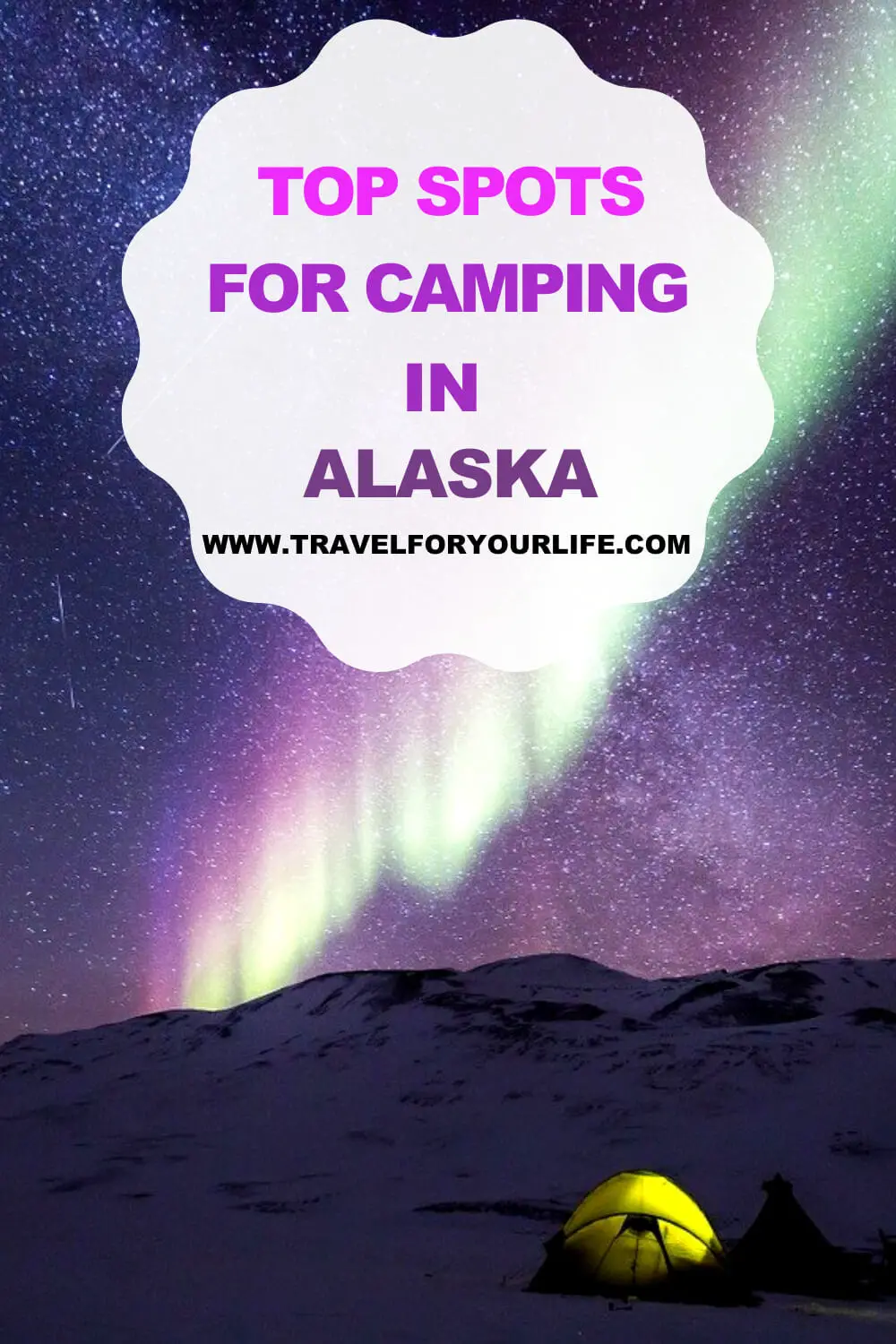

Related Posts
Best Time to Go Whale Watching in Alaska
Whale watching is a personal pastime of mine, and Alaska is a bucket list destination for wildlife enthusiasts. Every summer, whales make their long migration from the warmer waters of Mexico and Hawaii to the food-rich waters of Alaska. Travelers who dream of...
The Best Spots for an Epic Alaska Hiking Trip
Alaska is a hiker’s paradise, and anyone who loves nature will never want to leave this wild frontier. The state is home to turquoise lakes, alpine tundra, sparkling rivers, temperate rainforest, and some of the highest peaks in North America. It’s enough to leave me...
How to Spend an Adventurous Trip to Alaska
Alaska is dubbed the Last American Frontier. It’s arguably the last place in the United States where you can unplug from the modern world and feel at one with Mother Nature. Its isolated wilderness, dramatic landscapes, and diverse wildlife make Alaska one of the...
The 13 Best Hikes in Zion National Park
Utah has unbelievable natural scenery, and it’s one of my favorite places to hike in the United States. There’s no shortage of incredible trails in this geologic wonderland. From the hoodoo amphitheatre of Bryce Canyon National Park to the sandstone arches of Arches...
Your Ultimate Guide to the Best Hikes in Olympic National Park
Far away from the red-rock cliffs of Zion National Park and sandstone arches of Arches National Park, Washington’s Olympic National Park feels like a different universe. Its temperate rainforests are unlike anything I’ve ever seen in America, and its rugged coastline...
A traveler’s guide to surfing Hawaii
Surfing is maybe one of top the things Hawaii is famous for. Hawaii is the world’s surfing mecca, and nowhere else on Earth is the sport more cherished. The Hawaiian Islands are more isolated than any other archipelago, and this distance allows swells to come from all...





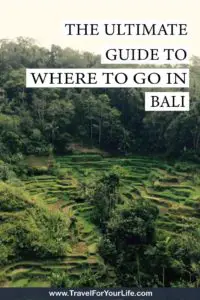
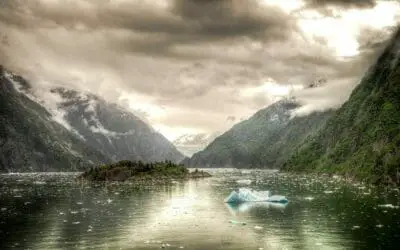

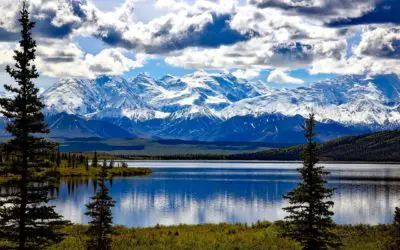
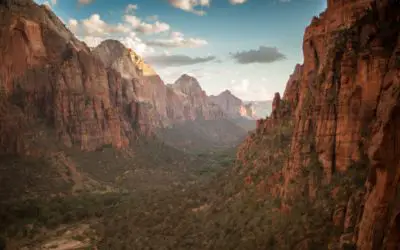
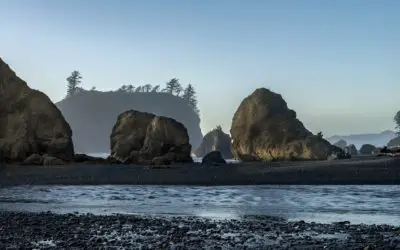


0 Comments